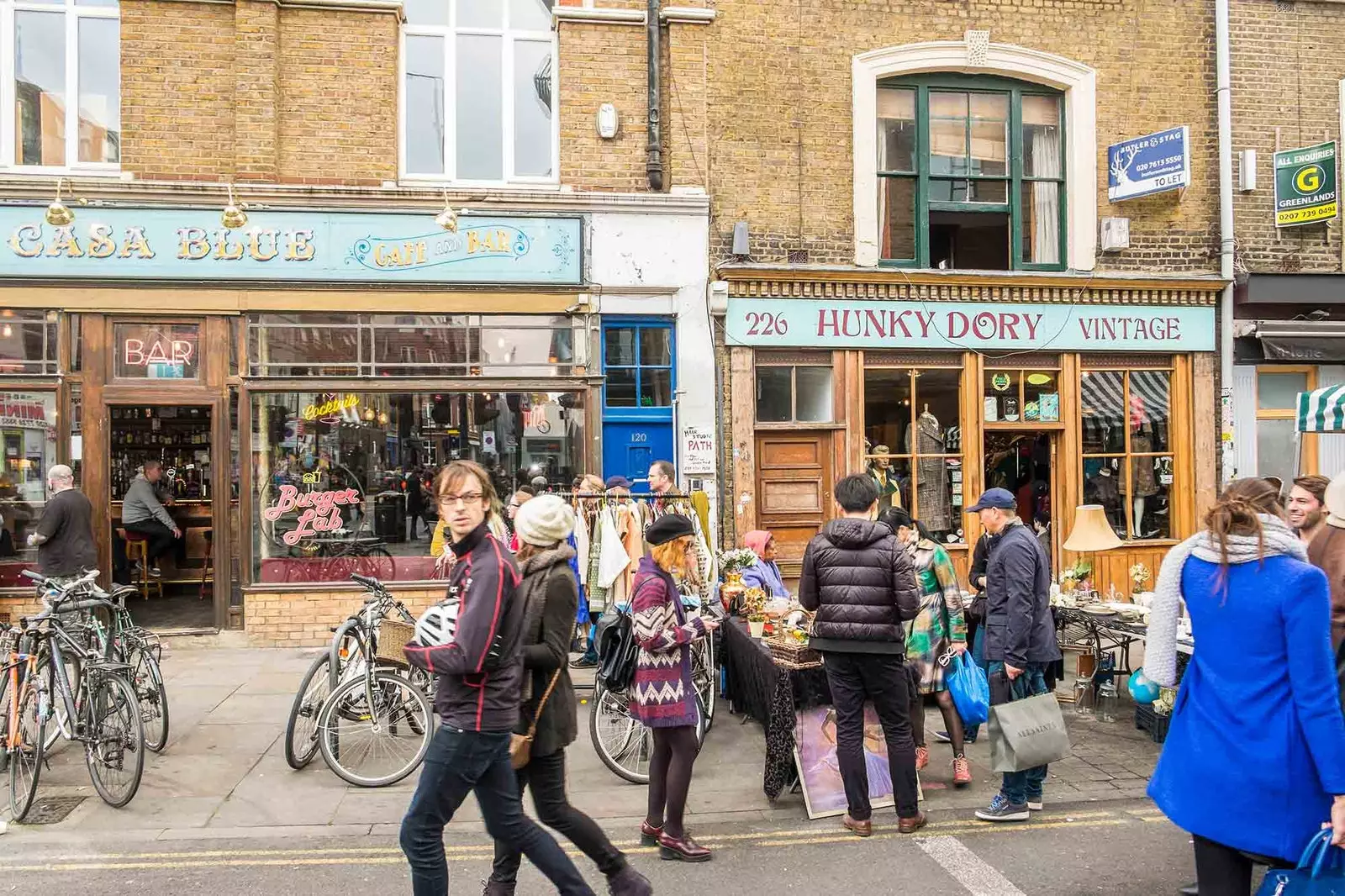
Brick Lane, London's potato market come to more
You go to Brick Lane on a Sunday. You come from the Liverpool Street tube stop or from the Shoreditch tube stop. You pass a box-shaped shopping mall, Boxpark Shoreditch, which mixes mainstream stores (such as Nike) with other alternatives like one that only sells t-shirts with vintage print prints. you walk in front of the dj that plays club techno at 5 in the morning, but at noon and in front of an audience that eats their lunches in the common areas of the box.
You pass a food market where the potatoes are placed four by four in a bowl, as if posing to be instagrammed . You pass a car park where stalls have been set up selling knick-knacks someone didn't want at home and second-hand (or not) Chinese and Indian shirts for five pounds. You face Brick Lane. You pass its corner and suddenly you are in the sanfermines. An endless crowd runs through the street. A crowd of trendy, hipster people in colored glasses and checkered shirts always different, but always the same. impress.
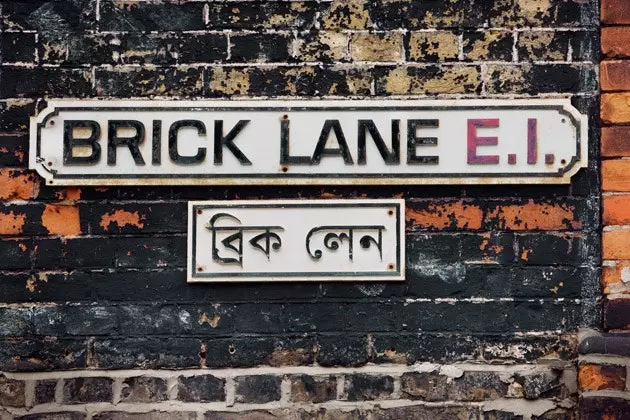
Brick Lane, Bengali neighborhood (and now also modern)
It's Brick Lane, the Sunday market, the pop-up shopping street preferred by Spaniards looking for a real new place , one that replaces Candem Town, already too touristy. Brick Lane is still the Bengali neighborhood of London (Banglatown they called it until recently), only now that community lives with all that countless hipsters who come to buy not only on Sundays.
There are designer outlets where you have to pay a pound to enter. This The Boiler House Food Hall , with its 30 food stalls where you can choose between Asian cuisines from countries whose cuisine is a mystery in Spain or cupcakes that seem props. And there are also brands like Abercrombie that don't want to miss out on the site where the most knowledgeable of their potential customers spend their Sundays. The adjacent streets are progressively filled with mini shopping malls.
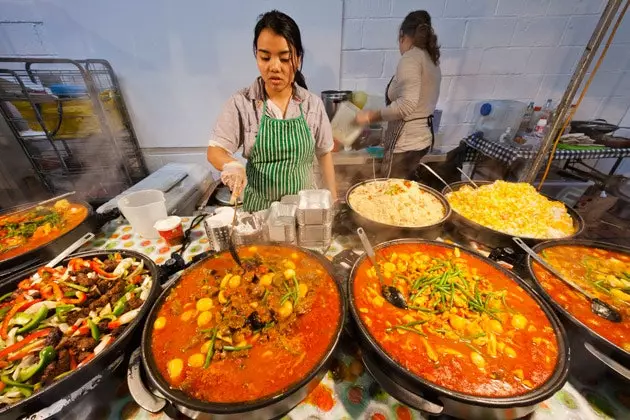
A booth at The Boiler House Food Hall
Passing Hanbury Street, the market is divided into Upmarket, for food and clothes, and Backmarket, with varied stalls full of junk for the most part. It is on this street that two rows of industrial buildings appear, ** The Old Truman Brewery **, the space for independent shops, for designers who want to be emerging, for young and tattooed merchants who sell vintage clothing and for shops albums where they raise an eyebrow if you ask for anything mainstream. It is also the most historic part of the neighborhood and includes the Director's House, from 1740, the Engineer's House, from 1830, and the 19th-century Casa Vat, with a hexagonal brick bell tower. On the other side, Tea Rooms is a gathering of antique shops with something special and hot drinks and fine pastries.
Between a modern store and a posturing stall, the old neighborhood that smells of curry still survives from the air vents of any kitchen and from some of the popular restaurants that still remain from the days when Banglatown boasted of serving the best preparations of the Indian subcontinent. There are also clothing stores reminiscent of those in Bombay and supermarkets full of Indian products.
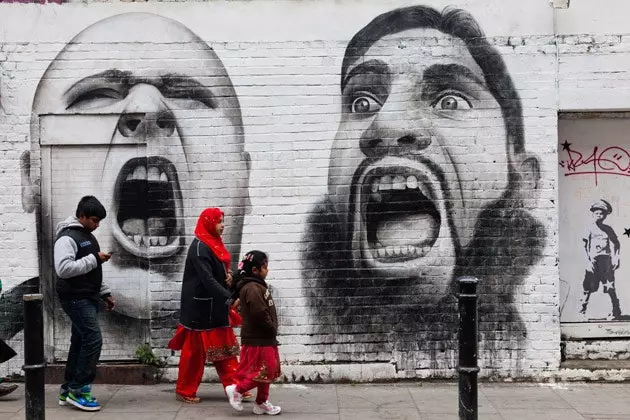
Among modern store still survives the old neighborhood
The market did not come from nowhere either: the Brick Lane Market, initially dedicated to fruit and vegetables, has existed since the 17th century, when it was the place where the Jewish community that initially inhabited the neighborhood got their supplies. The clubs, perhaps the most trendy in a city that feeds on novelties that are difficult to keep up with, complete the portrait. Many of the most successful are located on either side of The Old Truman Brewery.
They are the ones who most clearly represent the conflict that is transforming the neighborhood: they are the most coveted by London hipsters and the most criticized by devout Muslims who see how the neighborhood that had been theirs for the last century is getting out of hand, before this unstoppable invasion of shorts and rolling tobacco.
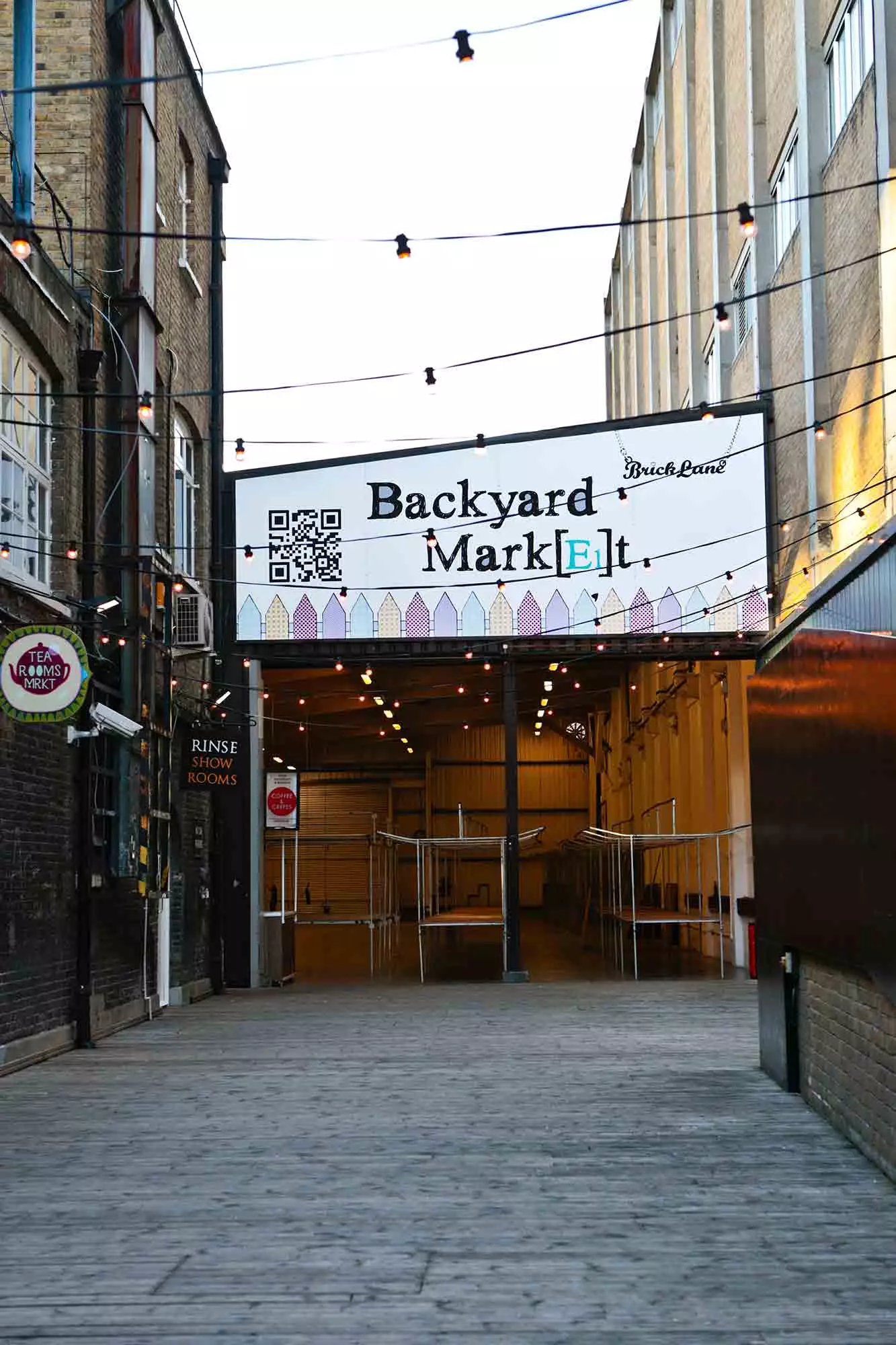
Brick Lane
